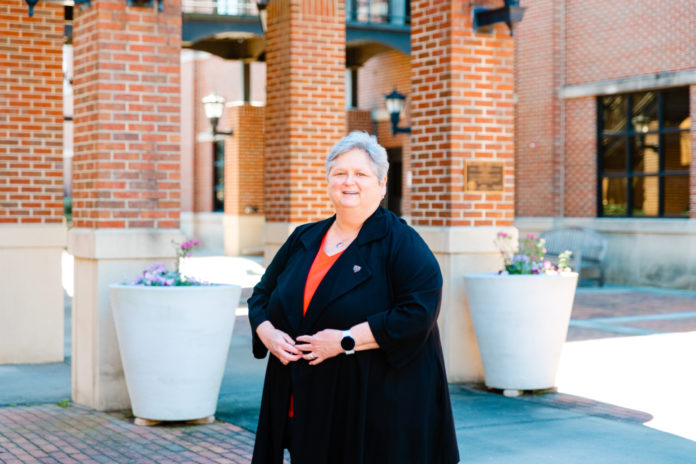This Women’s History Month, The Den is celebrating some of Mercer University‘s top leaders — our female deans. Eight of Mercer’s 12 schools and colleges are led by women, and we are highlighting each of these deans on separate days throughout March. Today, we spotlight Dr. Laura Lackey, dean of the School of Engineering.
Dr. Laura Lackey
How long have you worked at Mercer?
I’m in my 24th academic year at Mercer.
What was your career path to become dean?
Mercer has been great to me. I began my career as an assistant professor in 1998 and was promoted and tenured in 2002. In 2009, I was promoted to professor. I began serving as environmental engineering department chair in 2008 and served in that role until I was offered an associate dean position in 2013.
In 2017, I was asked to serve as interim dean while the School of Engineering searched nationally for its next leader. I applied for the position, and in April of 2018 was offered the job. It is a privilege to serve as dean of the School of Engineering.
What do you enjoy most about being dean?
I really enjoy working with the students. I love meeting them as first-year students and watching them learn and grow over their four years at Mercer. In every position I’ve been fortunate to hold at Mercer, I’ve enjoyed the students the most. As dean, I also enjoy facilitating the success of the talented faculty in the School of Engineering, as faculty success directly relates to student success.
What in your academic field are you most passionate about?
I am passionate about engaging students in meaningful, applied research. To that end, Mercer On Mission has guided my research agenda for over a decade.
In sub-Saharan Africa, the work was focused on bringing water to people, manual well drilling and point-of-use water filtration.
Meanwhile, we focused on removing dangerous elemental mercury vapor emitted in the air during gold mining in Ecuador and Peru.
A frequented practice of artisanal and small-scale gold miners in underdeveloped countries uses mercury to purify gold from ore; this process is called amalgamation. When mercury is in contact with pure gold, the two elements combine to form a compound termed an amalgam. As the mercury is liberated from the amalgam, miners often inhale toxic vapors, and mercury is released into the air, soil and water. Our work in Ecuador and Peru focused on designing, installing and testing a mercury capture system in an artisanal and small-scale gold mining processing facility.
It is important to note that all the research and design work was conducted and made possible by working with Mercer students and faculty partners, such as Dr. Adam Kiefer, Distinguished University Professor of Chemistry; Randy Harshbarger, associate professor emeritus; the late Dr. Michael MacCarthy, associate professor of environmental and civil engineering; and in-country hosts.
What advice would you give to future women leaders?
Be ready, stay positive, have confidence — you are not an imposter.










